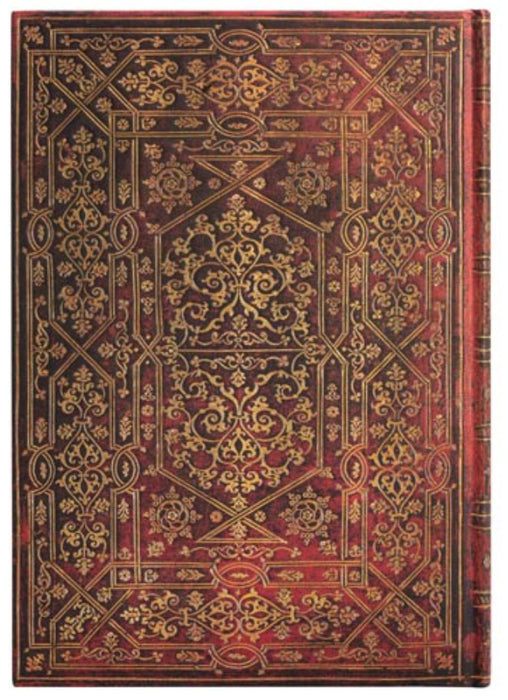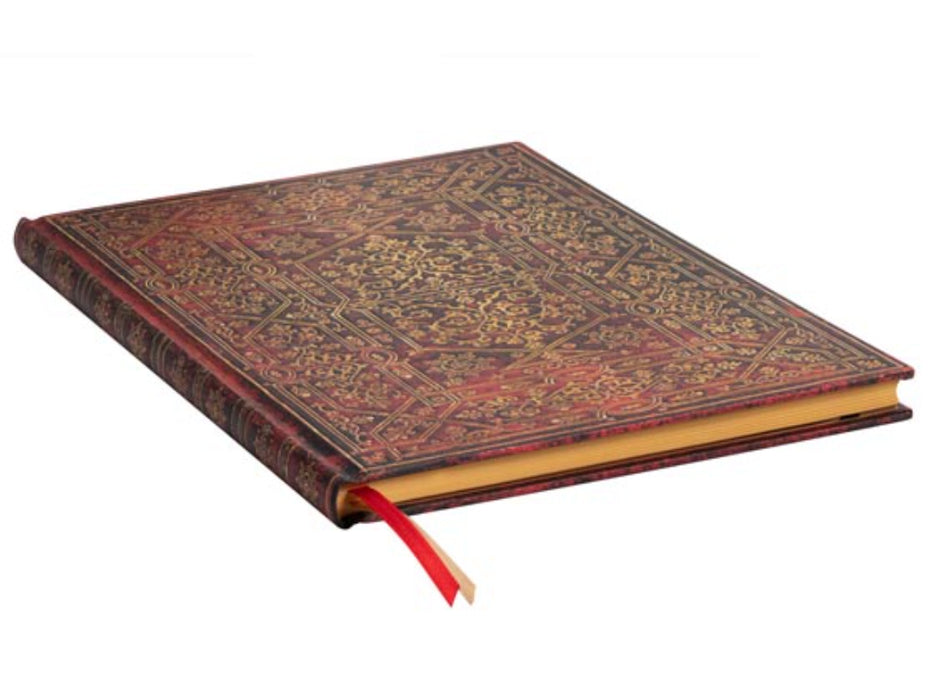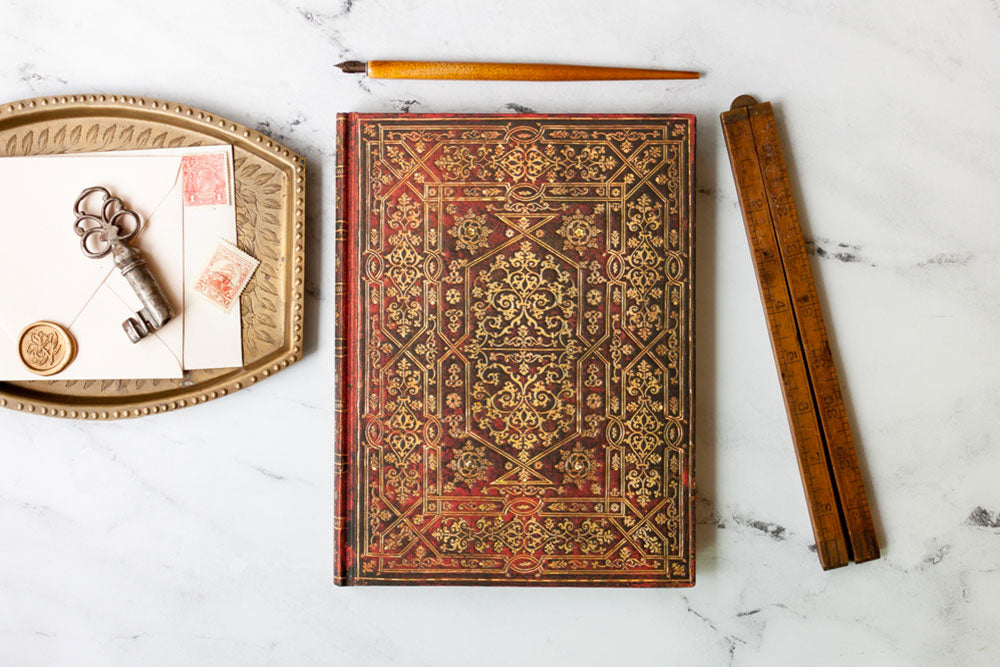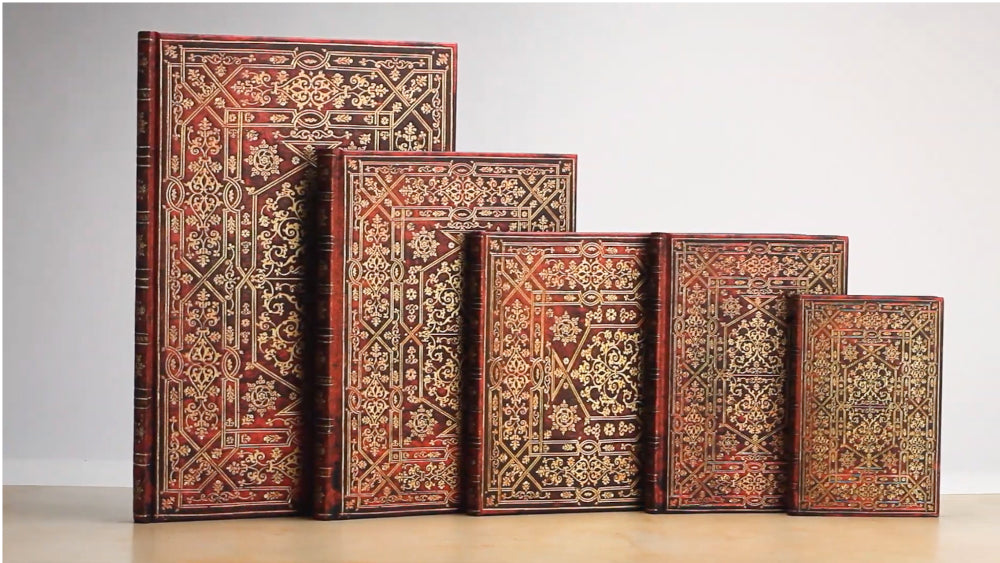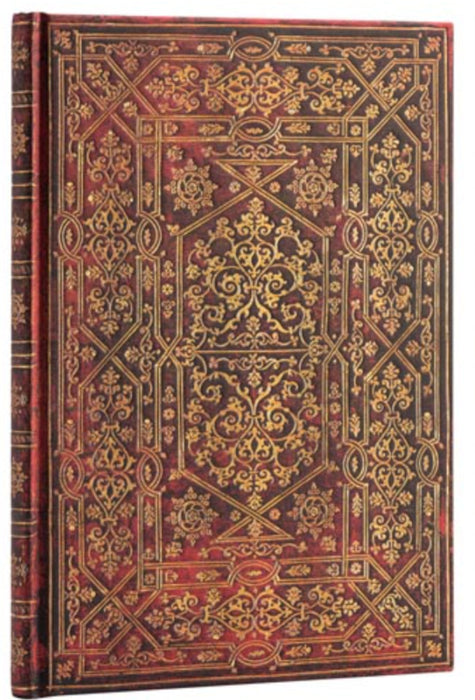
Paperblanks Evangeline Grande Journal - Blank
Cata Conde - Evangeline
The Musée Condé is home to over 1500 manuscripts, including Eusebius Evangelica praeparatione. What makes the 1540s edition so special is that it is the editio princeps, or first printing, of the Evangelica, which had existed only as a manuscript. Its binding is reproduced here.
Inside the majestic Château de Chantilly, located in Oise, France, is the Musée Condé. Within its halls lie vast collections of prints, drawings, sculptures, porcelain finery and other exquisite examples of the decorative arts, as well as a library holding over 1500 antique manuscripts. The museum was bequeathed in its entirety to the Institute de France by Henri dOrléans, with the conditions that the collection may only be seen at the Chantilly and the exhibition spaces never modified. And so the one-of-a-kind museum remains the same experience for its nearly 250,000 annual visitors today as it did when it first opened in 1898.
One especially unique work that can be found within the museums collection is the Evangelica praeparatione, an introduction to Christianity first written by the apologetic author Eusebius sometime in the 3rd or 4th century. Known in English as the Preparations of the Gospel, Eusebius work is notable for offering a recording of historic and philosophical writings from the time that are nowhere else preserved. Singular to the Preparations is Pyrrhos translation of the Buddhist Three Marks of Existence, upon which Pyrrhonism was based. It also contains a summary of the writings by the Phoenician priest Sanchuniathon as well as Diodorus Siculus account of Euhemerus voyage to the island of Panchaea, where Euhemerus purports to have found his true history of the gods.
Covering such a wide range of topics in addition to Eusebius own arguments for Christianity made the Preparations a weighty tome. In total, it consists of 15 books, all of which have been completely preserved. This collection is so valued because it is the editio princeps of the Evangelica, meaning it is the first time it was printed, having previously existed only as a handwritten manuscript or manuscript copy. The contents were printed in Paris in 1544 before a special set of bindings were crafted for it in Bologna in 1546. It is the regal red morocco binding of Book 15 in the anthology, featuring elaborate scrollwork and arabesques, that is reproduced here for our Carta Condé Evangeline cover.
ABOUT PAPERBLANKS
Paperblanks journals are the ultimate keepsake, a time capsule documenting a period in life, to be read and re-read through current and future generations. Known for their exceptional craftsmanship, high quality, and long-lasting durability, our journals will preserve your contents for years to come.
In Paperblanks journals the laid paper, detailed embossing and texture on each Paperblanks® cover offers a tactile experience a real-life, touchable interlude in an often-untouchable world of television and other digital information.
Paperblanks journals come in a tremendous variety of beautiful cover designs from almost every era, ensuring that there is truly a journal to fit every taste. Choose your own style and create a personalized brainstorming device, a portable stress-reliever, and a unique reflection of existence.
Specifications of the Paperblanks Evangeline Grande Unlined Journal
| Features: | Exacting design and production. |
| For : | Everyone |
| Origin: | Designed in Europe |
| Size: | approx 210mm x 300mm. 128 pages. |
| Extras: | Memento Pouch and Ribbon Marker |
| Acid free sustainable production paper. | |
| Smythe sewn binding |

